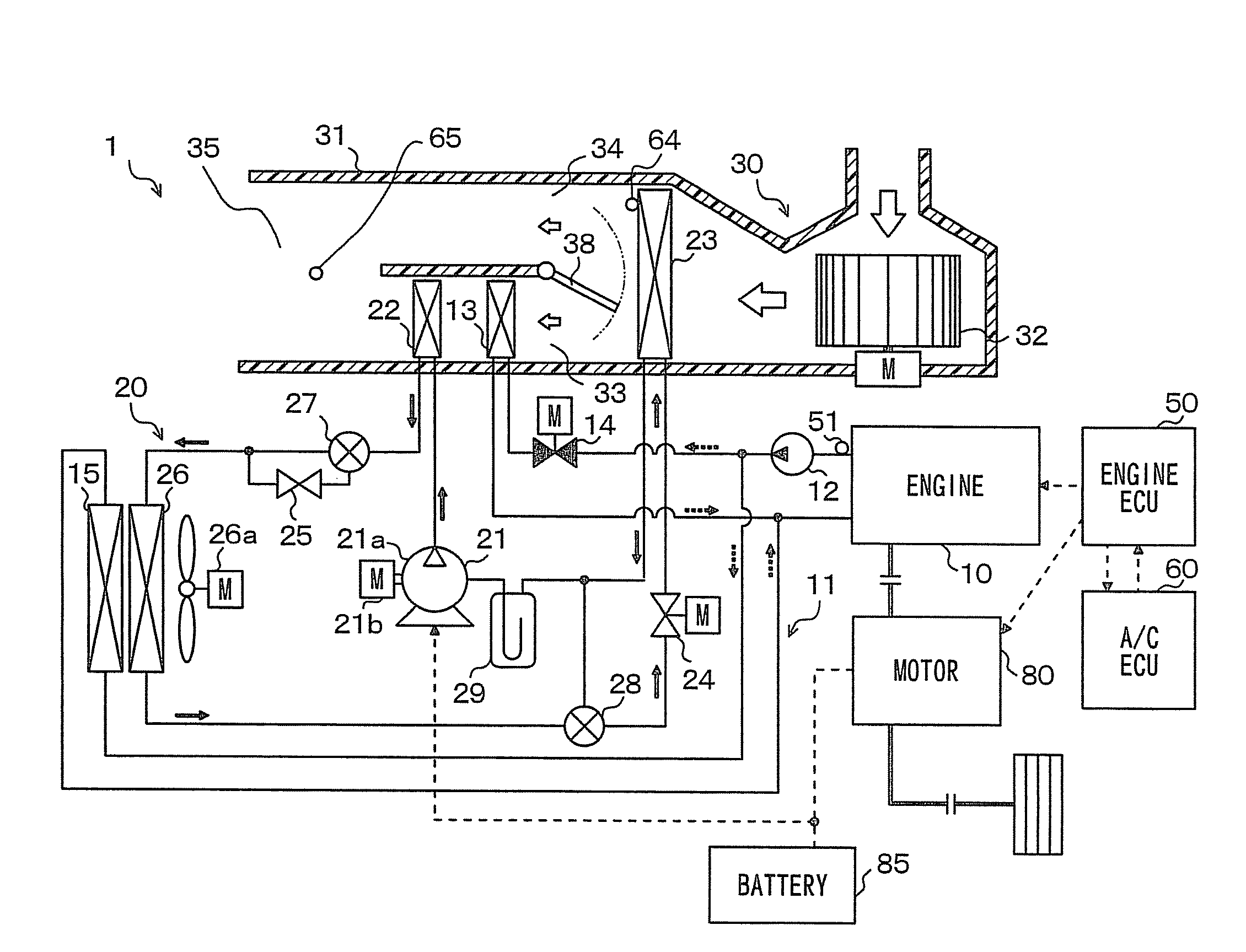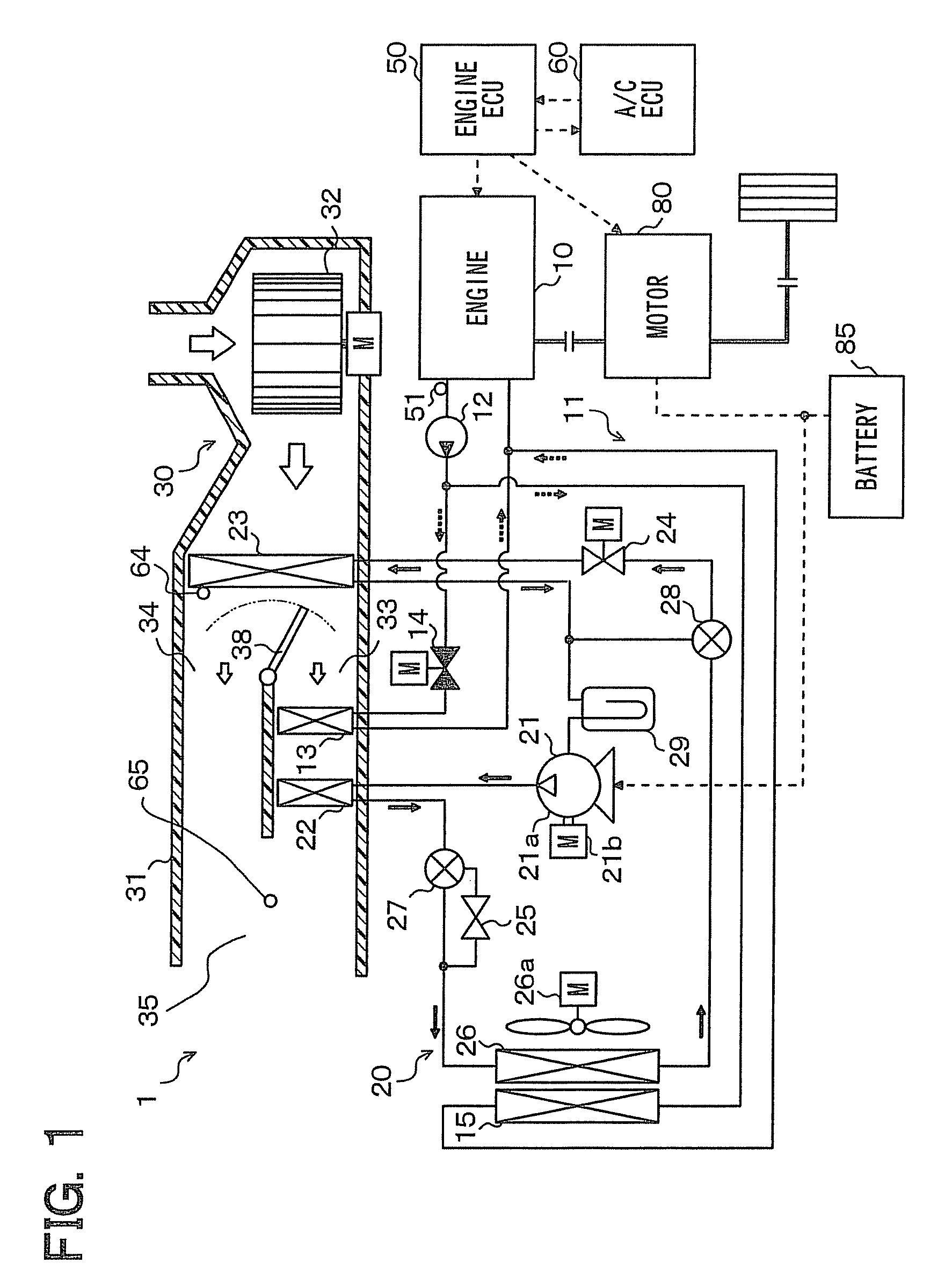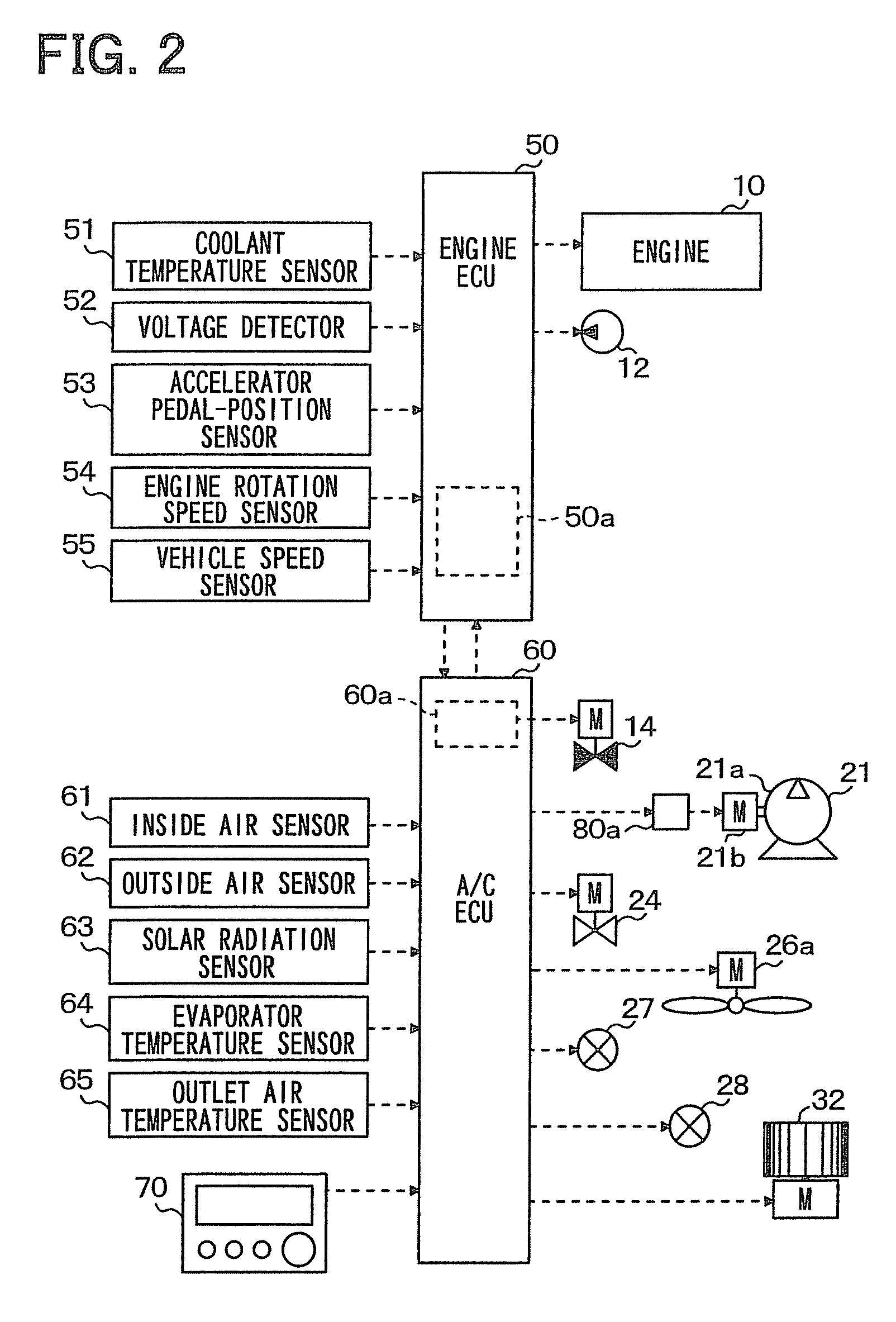Air conditioner for vehicle
a technology for air conditioners and vehicles, applied in vehicle position/course/altitude control, process and machine control, instruments, etc., can solve the problems of difficult to improve fuel efficiency in comparison examples, and achieve the effect of reducing fuel consumption, reducing waste heat of engines absorbed by engine coolant, and improving engine operation efficiency
- Summary
- Abstract
- Description
- Claims
- Application Information
AI Technical Summary
Benefits of technology
Problems solved by technology
Method used
Image
Examples
embodiments
[0027]An exemplar embodiment of the present disclosure will be described hereinafter referring to FIGS. 1 to 4. In the present exemplar embodiment, an air conditioner 1 for a vehicle is typically used for a hybrid vehicle (HV) in which a driving power for running is obtained from an internal combustion engine 10 and an electrical motor 80.
[0028]The hybrid vehicle in the present exemplar embodiment can generally switch its running states by actuating or stopping the engine 10 depending on a running load of the vehicle. For example, in one (hybrid vehicle state) of the running states, driving power is obtained from both of the engine 10 and the electrical motor 80. In another state (electric vehicle state), driving force is obtained only from the electrical motor 80 by stopping the engine 10. Accordingly, the hybrid vehicle can improve its fuel efficiency as compared to a vehicle in which driving power is obtained only from an engine.
[0029]The engine 10 is a gasoline engine controlled...
PUM
 Login to View More
Login to View More Abstract
Description
Claims
Application Information
 Login to View More
Login to View More - R&D
- Intellectual Property
- Life Sciences
- Materials
- Tech Scout
- Unparalleled Data Quality
- Higher Quality Content
- 60% Fewer Hallucinations
Browse by: Latest US Patents, China's latest patents, Technical Efficacy Thesaurus, Application Domain, Technology Topic, Popular Technical Reports.
© 2025 PatSnap. All rights reserved.Legal|Privacy policy|Modern Slavery Act Transparency Statement|Sitemap|About US| Contact US: help@patsnap.com



